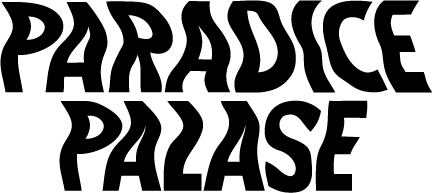Interview: Anya Rosen
Anya Rosen is an artist currently based in Brooklyn, NY. Inspired by the fraught relationship between humanity and natural resources, Anya has spent the past ten years working on farms across the eastern coast of the United States. Her paintings and drawings examine the tension between internal and external desire through figurative representation of psychic narrative. Inspired by dreams, subconscious thought, and fiction storytelling, the content of her work explores aversion to discomfort, attraction to pleasure, and cultural associations between naturalness and morality. Anya has participated in artist residency programs in Iceland and Colombia, at Breckenridge Creative Arts in Colorado, Vermont Studio Center, Trestle Gallery & Art Space in Brooklyn, NY, and at ACRE Residency in Steuben, Wisconsin. She has also exhibited work in the Pensacola Museum of Art, Brooklyn Art Cluster, Site:Brooklyn, Trestle Gallery, at While Supplies Last in Seattle, Washington, and at the Cementa Festival in Kandos, Australia. She has been featured in several publications including ArtMaze Magazine, Floorr Magazine, Ain’t Bad, Matador Review, and Friend of the Artist.
Read our interview with Anya below!
This Place Isn't Evil, But It's a Trap, chalk pastel and acrylic paint on plaster and foam board, 48 x 66 x 2 inches, 2024
PP: Walk us through a typical day in your studio or generally through your process to make new work.
AR: Making new work usually starts with a lot of reading. When I find a story or a character that evokes an emotion I want to get closer to, I look for scenes of transition, where something is about to happen, or where two conflicting things are happening at once. Visualizing a moment of anticipation just before chaos, for example, is an exciting moment to paint.
After initial ideation comes heavy studio time; prepping surfaces to paint on and trying different materials. Practically speaking, if I can build multiple surfaces at once it helps to consolidate the messier parts of the process and allows me to clean the studio up for the actual image making phase, which I am a bit superstitious about. The first marks of a painting are important to me and I try to honor the integrity of those as much as possible, so having a clean space with all my tools and materials organized allows me to feel relaxed and focused.
The Companions of Infantile Games, chalk pastel and acrylic paint on plaster and foam board, 48 x 38 x 2 inches, 2024
Everything Possible to be Believed is an Image of Truth, chalk pastel and acrylic paint on plaster and foam board, 46 x 48 x 4 inches, 2020
PP: What motivates you to make art?
AR: I think I can probably attribute a lot of my motivation to create art to my queerness. For me, making art is the perpetual act of coming out - a constant opportunity to redefine myself and to be vulnerable with myself. I enjoy the act of physically manifesting emotions that I'm not sure how to articulate with words, or emotions that I feel uncomfortable keeping inside of me. Making art has always felt like a safe space for self reflection and actualization, a way to practice being brave, and a way to share myself with the world.
PP: Who or what has had the biggest impact on your creative practice?
AR: My agricultural career has played a very significant role in my creative practice - I've been farming for the last 10 years of my life, in various jobs across the U.S. Maintaining an art practice throughout that journey has been complicated, exhausting, and beautiful. The mentorship and inspiration I've found through the farming community has changed the way I look at the world in general and I feel so grateful I have those experiences to reflect on when I'm making art.
But One Tooth to Break Free, plaster, concrete, and chicken feather meal, 23 x 20 x 12 inches, 2024
PP: Who is a current muse for your practice? Could be anyone fictional or real, dead or alive!
AR: I just finished reading this book called "Fowl Eulogies" by a French author named Lucie Rico. The story is about a woman named Paule, who returns to work on the chicken farm where she grew up after her mother dies. Despite being a vegetarian, Paule feels a sense of obligation to walk in her mother's footsteps and continue the family business, so as a chicken farmer does, she slaughters and sells the chickens for meat. As a way to process her grief (for the chickens and presumably her mother), Paule writes an eulogy for each chicken and ultimately sells the chickens at the market with their eulogy pasted on the packaging.
I'm not sure if the muse for my practice is Paule herself and the unconventional way she confronts her grief, or if it's Lucie Rico, the author who imagined a world where Paule can exist, but either way, this book has been the center of a lot of creation for the past couple of months.
PP: What is one goal you are aiming to achieve this year for your art practice?
AR: Honestly, the last couple of years have been tough for me creatively - I haven't been making as much as I've wanted to. This year my goal is to commit to myself, find projects I want to apply to, and build my portfolio back up to a place where I feel clear about my vision. On a more technical note, I've also been experimenting with plaster and concrete when making surfaces to paint on, and I'm excited to make new work that continues that exploration of materiality and form.
To learn more about Anya’s work, see her Instagram and Website




